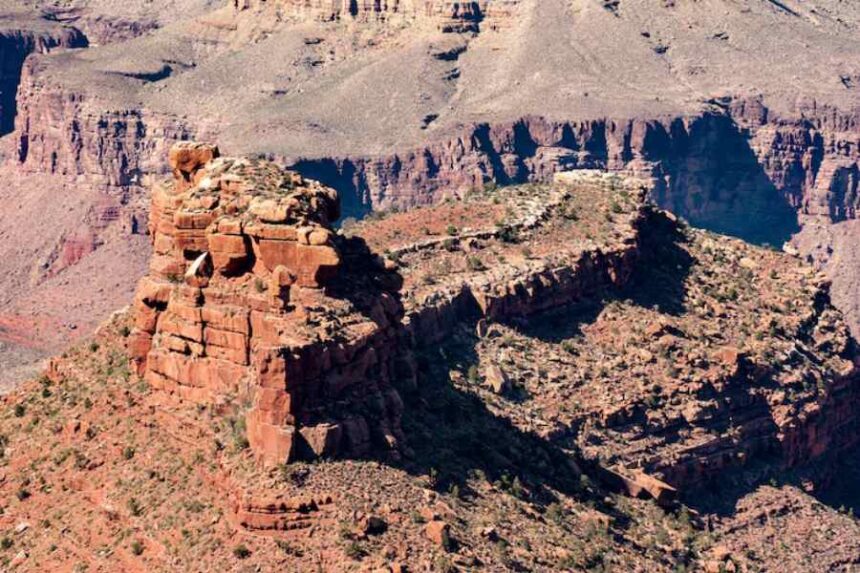In recent years, social media rumors have swirled around the provocative question: Does NASA own part of the Grand Canyon? This question has sparked debates across online forums, fueling conspiracy theories and speculative articles. While the Grand Canyon is known for its awe-inspiring beauty and historical significance, the idea that NASA might control part of it seems far-fetched—or is it? In this comprehensive exploration, we dive deep into the ownership, management, and legal framework surrounding the Grand Canyon to discover the truth.
The Grand Canyon is one of America’s most iconic natural landmarks, protected under federal law and visited by millions annually. However, the notion that NASA might own a piece raises eyebrows. Could it be for secret experiments? Astrobiology research? Or is it just internet folklore?
This article answers the central question—does NASA own part of the Grand Canyon?—with a structured, factual analysis. We also explore historical context, government involvement, why this theory emerged, and the legal implications of land ownership within national parks. Whether you’re a skeptic or a curious reader, this piece will satisfy your curiosity with research-backed insights.
Does NASA own part of the Grand Canyon?
No, NASA does not own any part of the Grand Canyon. The land is federally protected and managed primarily by the National Park Service, not NASA. Rumors linking NASA to secret activities in the canyon are unverified and likely stem from speculative theories or misinterpretations.
Why Do People Think NASA Owns Part of the Grand Canyon?
The belief that NASA owns part of the Grand Canyon has gained traction online, but it’s rooted more in fiction than fact. This myth likely stems from NASA’s periodic use of the area for scientific research. Thanks to the Grand Canyon’s unique geological features—such as its layered rock formations and erosion patterns—it often serves as a Mars analog site, where scientists simulate extraterrestrial conditions. However, researching public land does not equate to ownership.
Certain restricted zones within the Grand Canyon deepen the confusion. These areas are typically closed to protect wildlife, preserve fragile ecosystems, or honor sacred indigenous lands. Yet conspiracy theorists often claim these zones are off-limits due to classified NASA activity or even hidden alien relics.
Adding to the speculation, viral videos and sensational headlines spread misinformation, blurring fact and fiction. Some even tie it into broader wealth inequality narratives or cultural discussions, loosely linking the story to topics like Indian Net Worth, though there’s no factual connection.
The Grand Canyon is federally owned and managed by the National Park Service. NASA, while occasionally conducting studies there, does not legally own it. The myth endures due primarily to internet speculation and widespread misinformation.
How Is the Grand Canyon Governed and Managed?
Managing the Grand Canyon involves a complex collaboration between federal agencies and Native American tribes. Each plays a unique role in protecting its natural and cultural legacy.
Federal Management of the Grand Canyon
The Grand Canyon is administered primarily by the National Park Service (NPS), which falls under the U.S. Department of the Interior. As a designated national park, the canyon is protected as federal land and managed by the American public. The NPS oversees its day-to-day operations, including visitor access, environmental preservation, maintenance, and educational outreach.
Tribal Stewardship and Cultural Significance
Portions of land within and around the Grand Canyon are managed by Native American tribes such as the Havasupai, Hopi, and Navajo Nations. These lands are not under the jurisdiction of the NPS but are instead governed by tribal authorities. These tribes maintain deep cultural, spiritual, and historical connections to the canyon, and their stewardship plays a vital role in landscape management.
Scientific Collaboration and NASA’s Involvement
NASA has occasionally used the Grand Canyon’s terrain for scientific purposes, especially in geological studies that simulate Martian environments. These activities are temporary and conducted through permits or agreements with park authorities. NASA has no administrative control or ownership of any section of the canyon.
Multi-Agency Land Oversight and Access Control
Additional oversight comes from agencies like the Bureau of Land Management (BLM) and the U.S. Forest Service, which supervise surrounding lands. Restricted zones are generally established to protect ecosystems, ensure visitor safety, or preserve sacred indigenous sites, not to support hidden government or NASA operations.
What Fuels the NASA Grand Canyon Conspiracy?
The theory that NASA owns or operates within the Grand Canyon continues to spread online, despite having no factual basis. A mix of digital misinformation, pop culture, and general mistrust in government institutions fuels this ongoing myth. Key contributors include:
- Social Media Misinformation: Influencers and conspiracy theorists often post sensationalized videos suggesting NASA’s secret involvement in the canyon, drawing attention and engagement without evidence.
- Misunderstood Scientific Activity: NASA occasionally conducts Mars analog research in the Grand Canyon due to its geological similarities. Many misinterpret this as a sign of ownership or control.
- Restricted Area Confusion: Certain zones in the canyon are off-limits to protect fragile ecosystems or sacred indigenous sites. Some mistake these areas as evidence of covert government activity.
- Stereotypes About Government Secrecy: NASA’s image as a mysterious agency in movies and media often feeds into public speculation and doubt.
- Sci-Fi and Pop Culture Influence: Fictional narratives in books and films frequently connect remote canyons to alien technology or hidden civilizations, influencing real-world beliefs.
These overlapping narratives create a compelling-but—entirely fictional—storyline around NASA and the Grand Canyon.
When Did the Rumor Begin and Why Is It So Persistent?
Rumors surrounding NASA and the Grand Canyon started gaining traction in the early 2000s with the growth of internet conspiracy communities. Initially, it began with a misreading of articles discussing NASA’s geological studies in various canyon formations across the U.S., including the Grand Canyon.
Over time, stories evolved, and some even claimed that NASA was guarding ancient alien civilizations or building secret bases underground. The human tendency to connect unexplained phenomena with government secrecy allowed these ideas to flourish. Despite repeated debunking by experts, the mystery continues to thrive, primarily because of the internet’s short memory and love for controversy.
Another factor is the allure of “hidden truth” narratives. These gain more attention than factual information, often overshadowing official clarifications from NASA or the National Park Service. The rumor persists because it’s sensational, not because it’s real.
What Are the Legal Frameworks Preventing NASA Ownership?
The Grand Canyon is one of the most protected natural landmarks in the United States. Multiple federal laws and legal structures ensure it cannot be owned or controlled by any private entity or federal agency, including NASA. These frameworks are designed to preserve the canyon’s cultural, historical, and environmental integrity.
- Antiquities Act of 1906: This foundational law allows the President to designate landmarks and structures as national monuments. It was instrumental in protecting the Grand Canyon early on and establishing its importance as a cultural and natural heritage site.
- National Park Service Organic Act (1916): This act created the National Park Service and gave it the authority to manage parks like the Grand Canyon. It mandates resource conservation while allowing public enjoyment.
- Federal Land Policy and Management Act (FLPMA): FLPMA emphasizes that public lands must remain under federal management and cannot be transferred to other agencies without Congressional approval.
- Tribal Sovereignty Laws: These laws acknowledge and protect the rights of Native American tribes to govern and manage their ancestral lands near the Grand Canyon.
- Department of the Interior Oversight: While NASA is a federal agency, it operates under the Executive Branch and lacks jurisdiction over national parks, which the Department of the Interior manages.
In Closing
The idea that NASA owns part of the Grand Canyon is an intriguing but unfounded myth. While NASA has conducted occasional geological research in the area—mainly for Mars analog studies—it has never owned, controlled, or managed any portion of the canyon. The Grand Canyon is federally protected land, managed by the National Park Service and safeguarded by strict laws to ensure public access and preservation.
Misleading social media content, sci-fi influences, and conspiracy theories have kept the rumor alive, but no credible evidence supports it. Understanding how public lands are governed helps separate fact from fiction. So, if someone asks, “Does NASA own part of the Grand Canyon?”—the clear answer is no, and it’s legally impossible.
FAQ’s
Does NASA have any facilities in the Grand Canyon?
No, NASA has no permanent or operational facilities within the Grand Canyon. Any research conducted in the area is done temporarily and only in coordination with the National Park Service.
Why does NASA study the Grand Canyon?
NASA studies the Grand Canyon because its unique geology closely resembles that of Mars, making it an ideal location for analog missions, scientific comparisons, and training—not for acquisition or control.
Are there restricted zones in the Grand Canyon because of NASA?
Restricted zones within the Grand Canyon are typically established for public safety, environmental preservation, or to honor Native American cultural sites. None are related to NASA’s research or presence.
Who owns the Grand Canyon?
The Grand Canyon is federally owned and primarily managed by the National Park Service under the U.S. Department of the Interior. However, certain areas fall under the authority of Native American tribes.
Is there any truth to NASA finding alien evidence in the Grand Canyon?
There is no scientific or official evidence supporting claims of alien discoveries in the Grand Canyon. Such theories are based on misinformation, speculation, and viral internet myths.




